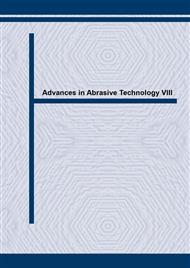p.447
p.453
p.459
p.465
p.471
p.475
p.483
p.489
p.495
Influence of Material of Small Radius Ball End Mill on Cutting Accuracy in Deep Precision Machining
Abstract:
Machining of complex shape and deep micro cavity in die and mold is mostly carried out by electrical discharge machining process. However, it may not be able to sufficiently meet delivery deadline minimization and cost reduction of die and mold. Therefore, precision machining method using small radius ball end mill capable of machining deep cavities in miniature die and mold is proposed as a substitute for electrical discharge machining. This report presents such a result supported by experiment in which it has been proved that long tool life of ball end mill can be maintained by changing coating material and edge profile of small radius ball end mill experiencing form accuracy and get needed surface finish in workpiece. Therefore, for precision machining of die and mold as substitute for electrical discharge machining, it is proposed to perform deep precision machining using small radius ball end mill. This paper shows effect proved by experiment how cutting characteristics which occur by changing of coating material and edge profile of small radius ball end mill influence form accuracy and finishing surface of workpiece.
Info:
Periodical:
Pages:
471-474
Citation:
Online since:
August 2005
Authors:
Price:
Сopyright:
© 2005 Trans Tech Publications Ltd. All Rights Reserved
Share:
Citation:


